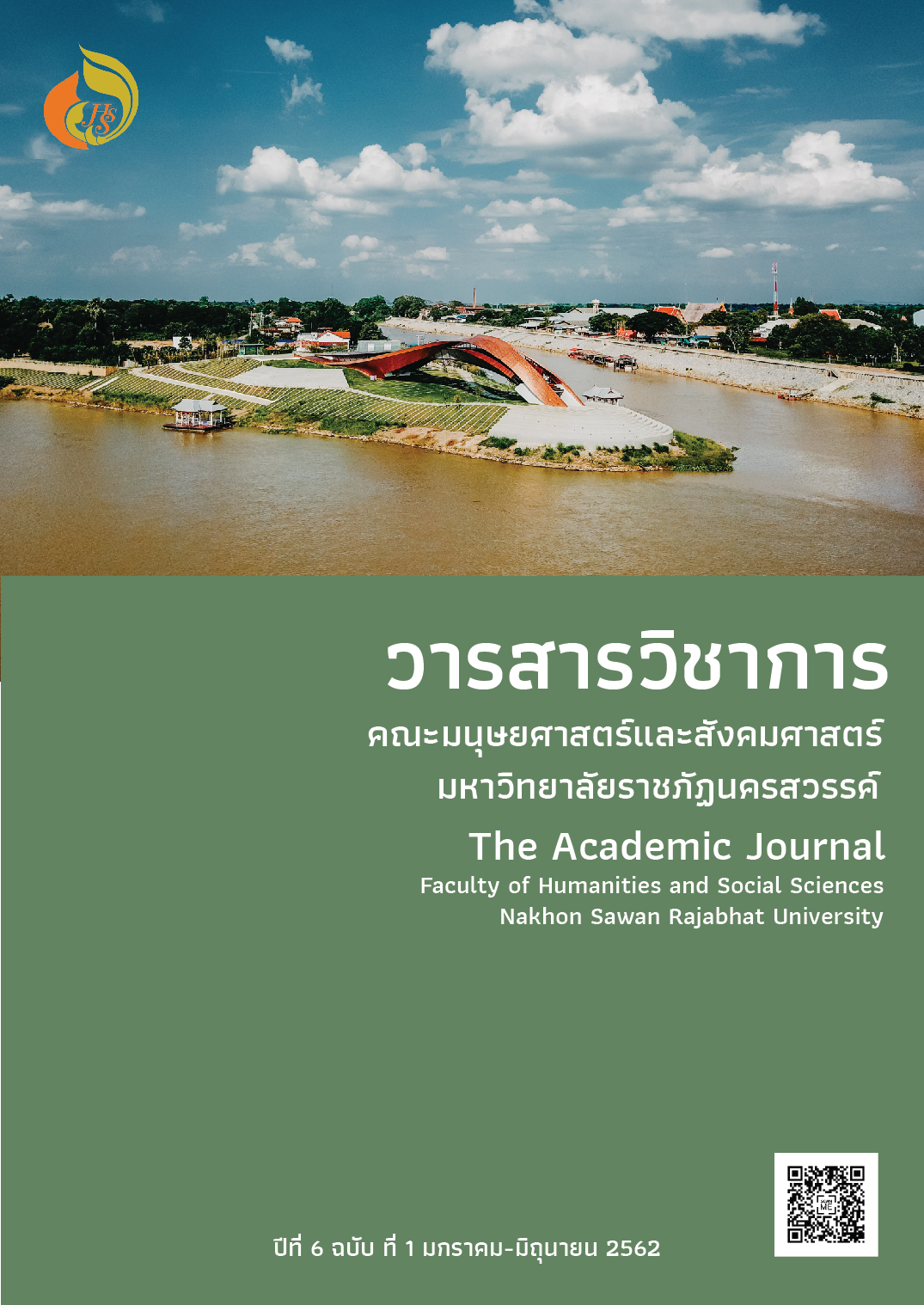Evolution of Performing Art Criticism in Thailand
Main Article Content
Abstract
This qualitative research aims to investigate the evolution of performing art criticism in Thailand from documents (both primary and secondary sources) and interview to a number of specialists. It was found that performing art criticism is an intellectual activity whose evolution has coexisted with Thai performing art dynamics. The evolution can be divided into 2 periods: pre-westernization period and post-westernization period. During the pre-westernization period, criticism was in orally “gossipy” form and it was done to those involving and not involving in performing art society. The style and pattern were not similar to criticism in the western world. The post-westernization period began in the reign of King Rama IV and became obvious in the reign of King Rama V. Law, content, pattern, creation and appreciation, and criticism in written form were emerged in this period. At the beginning, criticism was mainly presented through printed media and gradually evanescent. At the present, criticism appears in new channels of media. Performing art appraisal has been performed in forms of review, award, and competition. After the educational reform in Thailand, Thai performing art was divided into “classical drama” which restricts to traditional performing convention and “dramatic arts” which is influenced by western dramatic style. This division results in different criticism paradigms. Anyhow, criticism helps develop Thai performing art and highlight value of performing art to the audience.
Article Details
References
จุฬาลงกรณ์มหาวิทยาลัย.
กุหลาบ มัลลิกะมาส. (2521). วรรณคดีวิจารณ์. กรุงเทพฯ: มหาวิทยาลัยรามคำแหง.
เจตนา นาควัชระ. (2526). วัฒนธรรมแห่งการวิจารณ์. ปาจารยสาร. 10(1): 94-120.
_______. (2560). เมื่อทฤษฎีจากแผ่นดินแม่เสนอทางแก้ให้มิตร: การบรรยาย ณ สถาบันวิจัย
นานาชาติ มหาวิทยาลัยเบอร์ลินเสรี. สืบค้นเมื่อ 22 ธันวาคม 2560, จาก
http://www.thaicritic.com/?p=3870
จักรกฤษณ์ ดวงพัตรา. (2544). วรรณคดีการแสดง. ขอนแก่น: สำนักศิลปวัฒนธรรม มหาวิทยาลัยขอนแก่น.
ดำรงราชานุภาพ, สมเด็จพระเจ้าบรมวงศ์เธอ กรมพระยา. (2465). ระเบียบตำนานเล่นละครถวายตัวที่วังวรดิศ.
พระนคร: โสภณพิพรรฒธนากร.
_______. (2508). ตำนานละครอิเหนา. พิมพ์ครั้งที่ 4. พระนคร: ป. พิศนาคะการพิมพ์.
ธนิต อยู่โพธิ์. (2516). ศิลปะการละครรำหรือคู่มือนาฏศิลป์ไทย. พระนคร: โรงพิมพ์ศิวพร.
ปาริชาติ จึงวิวัฒนาภรณ์. (2550). จากละครเวทีสู่การวิจารณ์: รวมบทความวิชาการ. กรุงเทพฯ: ชมนาด.
พิธพร วินิจฉัย. (2549). การวิเคราะห์กระบวนการวิจารณ์ภาพยนตร์ของ ประวิทย์ แต่งอักษร. กรุงเทพฯ:
มหาวิทยาลัยธรรมศาสตร์.
ราชบัณฑิตยสถาน (2546). พจนานุกรม ฉบับราชบัณฑิตยสถาน พ.ศ. 2542. พิมพ์ครั้งที่ 2. กรุงเทพฯ:
ราชบัณฑิตยสถาน.
รื่นฤทัย สัจพันธ์. (2540). อิทธิพลวรรณกรรมต่างประเทศที่มีต่อวรรณกรรมไทย. กรุงเทพฯ: มหาวิทยาลัย
รามคำแหง.
วิทย์ ศิวะศริยานนท์. (2518). วรรณคดีและวรรณคดีวิจารณ์. พิมพ์ครั้งที่ 5. กรุงเทพฯ: แพร่พิทยา
วีณา วีสเพ็ญ. (2549). วรรณคดีการละคร. มหาสารคาม: อภิชาตการพิมพ์.
ศิลปากร, กรม.(2514) บทละครเรื่องพระมะเหลเถไถ บทละครเรื่องอุณรุทร้อยเรื่อง กลอนเพลงยาวเรื่องหม่อม
เป็ดสวรรค์ กลอนเพลงยาวเรื่องพระอาการประชวรของกรมหมื่นอัปสรสุดาเทพ และบทละครเรื่องระเด่นลันได. กรุงเทพฯ: ศิลปาบรรณาคาร.
สิทธา พินิจภูวดล. (2526). “วรรณคดีวิจารณ์” ใน เอกสารการสอนชุดวิชาไทย4: วรรณคดีไทย หน่วยที่
8–10. นนทบุรี: มหาวิทยาลัยสุโขทัยธรรมาธิราช.
สุรพล วิรุฬห์รักษ์. (2547). หลักการแสดงนาฏยศิลป์ปริทรรศน์. กรุงเทพฯ: สำนักพิมพ์แห่งจุฬาลงกรณ์
มหาวิทยาลัย
_______. (2553). นาฏยศิลป์รัชกาลที่ 5. กรุงเทพ: คณะกรรมการอำนวยการจัดงานรำลึก 100 ปี
วันสวรรคตพระบาทสมเด็จพระจุลจอมเกล้าเจ้าอยู่หัว.
_______. (2561, 21 พฤศจิกายน). สัมภาษณ์.
Cohen, Robert. (1983) Theatre : brief edition. Palo Alto, Calif : Mayfield Pub. Co.
Dukore, Bernard F. (1974). Dramatic theory and criticicm: Greeks to Grotowski. New York: Holt,
Rinehart and Winston.
TRF Criticism Project. (2561). รายงานผลการวิจัย. สืบค้นเมื่อ 7 กรกฎาคม 2561, จาก
http://www.thaicritic.com/?page_id=600

